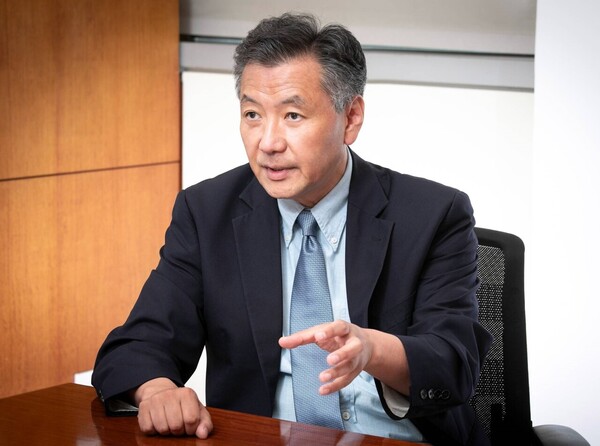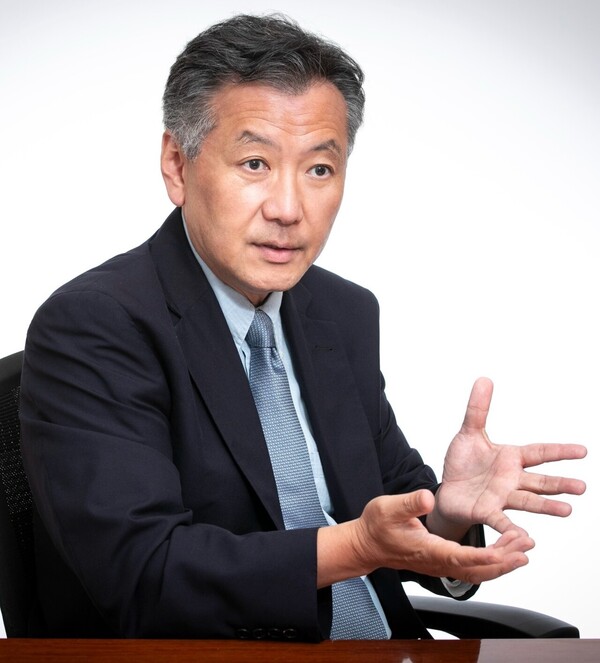Korean-born expert in Canada stresses appropriate reimbursement for biological drugs
The emergence of biological agents in asthma pharmacotherapy is changing the treatment paradigm for severe asthma, previously characterized by bronchodilators and inhaled steroids (ICS).
The advent of interleukin inhibitors has made it possible to establish phenotype-specific treatment strategies in patients with severe asthma, and eosinophil levels have been utilized as an important indicator for predicting the severity of asthma and the effectiveness of therapeutic agents.
In Korea, five biologics are approved by the Ministry of Food and Drug Safety to treat severe asthma. Still, only omalizumab (Zolair), a drug for allergic asthma, is covered by insurance, while all other interleukin inhibitors used to treat eosinophilic asthma are not reimbursed.
Especially in an environment where the number of steroid-dependent severe asthma patients is increasing, there is a growing need for insurance coverage of biologics that can reduce direct and indirect medical costs and improve patients' clinical symptoms.
Korea Biomedical Review met with Dr. Harold Kim, a leading expert in the field of asthma treatment and professor at McMaster University Faculty of Medicine/Western University, and a former president of the Canadian Asthma and Allergy Society, to learn the current status of severe asthma treatment in Canada and the prescribing experience and clinical value of biologics.

Question: Korea is known for its poor asthma management, including the underuse of inhaled corticosteroids (ICS) and the overuse of oral corticosteroids (OCS). What is the situation in Canada?
Answer: While the situation in Canada is far from perfect, it is better than Korea based on mortality and hospitalization rates. Currently, Canada has a population of about 40 million people, of which there are about 250 deaths from asthma per year. That's about five times lower than the Korean statistics, which is a big difference. We are proud of these results because Canada is one of the first countries to recognize the need for proper asthma symptom control and reduced exacerbation rates.
Many studies show that ICS formulations have been recommended in Canada as early as the 1980s. Primary care is also very important for asthma, and Canada strongly encourages primary care providers to follow asthma treatment guidelines. We are supporting physicians to actively guide patients in managing their symptoms, even if they are still in mild phases. These efforts have resulted in better asthma care today.
Q: So what is the current state of care for asthma patients in Canada, i.e., guideline-adhering treatments?
A: The diagnosis of asthma is based on the patient's clinical history and diagnostic tests. This is not perfect, but it is done using the best available techniques, including identification of characteristic symptoms and variable airflow limitation, pulmonary function tests, bronchial provocation tests, and allergy tests. Once the diagnosis is made, inhaled medications are the first line of treatment to help relieve symptoms. The next step is to move to combination therapy, which involves more frequent dosing of the ICS. A LAMA (long-acting muscarinic antagonist), such as Spiriva (tiotropium bromide hydrate), may then be used, or a triple therapy of ICS + LABA (long-acting beta agonist) + LAMA is commonly used. If exacerbations persist or symptoms remain uncontrolled, patients may be escalated to biologics.
The use of OCS is considered a treatment failure by a Canadian specialist or primary care provider. It is also considered a treatment failure if a patient uses OCS only once. So if you're on triple therapy and you're still seeing patients needing OCS once or twice a year, it's common to consider biologics. So if you're on ICS, LABA, or LAMA, and you're still not doing well and using OCS, it's considered a real treatment failure, so biologics is usually the next step.
Q: Why are you so wary of OCS use?
A: There are a lot of side effects to be aware of with OCS use, such as decreased bone density, immune suppression, cataracts, glaucoma, hypertension, diabetes, psychiatric problems, hypothalamic-pituitary-adrenal axis suppression, just to name a few common ones. Many more side effects can occur; we all know they are very serious. Even studies show that intermittent use of OCS increases mortality in patients. This has been well documented in a Danish study that showed that the use of OCS in asthma has not been fully considered and that even intermittent use of OCS is associated with an increased risk of mortality and adverse events.
Q: What is asthma patients’ access to biologics in Canada?
A: In Canada, there are 10 provinces and three territories under the federal government, and each province is responsible for drug coverage. Ontario, where I live now, is the largest province in Canada, and many people have private insurance through workplace health insurance. In addition, seniors over 65 and people under 25 are covered by government-sponsored public insurance. The biologics currently used to treat asthma (mepolizumab, reslizumab, benralizumab, omalizumab, and dupilumab) are covered by private and public insurance. If you're an asthmatic and need to take an OCS once or twice a year, we believe you meet the criteria for coverage of biologics.
In our clinic, we have over 200 patients on biologics for asthma, so many patients benefit from them. From the patient's perspective, the presence or absence of these biologics makes a huge difference in their lives, and the therapeutic benefits they receive are dramatic. The patient response to biologics is fairly self-evident and significantly improves disease.
Q: Treatment patterns for severe asthma are changing with the development of biological agents, particularly interleukin inhibitors.
A: Over the past 15 years, research has shown a strong association between high eosinophil levels and the triggering of asthma symptoms, respiratory dysfunction, and asthma severity, meaning that eosinophil levels are now considered a marker of asthma severity. Mepolizumab, an IL-5 inhibitor, is the first "eosinophilic" asthma treatment that is beneficial in treating asthma by focusing on these eosinophil levels.
When a patient with severe asthma has poorly controlled symptoms and needs OCS, they are tested for phenotype, which usually involves testing their eosinophil counts, exhaled nitric oxide levels, breathing, and allergy status. And based on the results, we determine which phenotype they fall into. If the eosinophil count is greater than 150/μL, we consider using an IL-5 inhibitor, such as mepolizumab, benralizumab, or reslizumab.

Q: How many patients with severe asthma have eosinophilic asthma, and what is the prognosis for patients with eosinophilic asthma compared to patients with traditional asthma?
A: The proportion of patients with eosinophilic asthma varies depending on the population you're looking at, but a study I published three years ago found that two-thirds of all patients with severe asthma, or about 65 to 70 percent, have eosinophilic asthma. More recent global studies have shown that a higher percentage of patients have eosinophilic asthma. This study included data from Korea.
Fifteen years ago, the poor prognosis of patients with true eosinophilic asthma was underestimated and not given enough attention. However, clinical experience and multiple studies of most biologics have shown that the higher the eosinophil count in patients, the more likely they are to have severe asthma. It has also been reported that patients with higher eosinophil counts have a greater response to biologics. For example, compared to patients with eosinophil counts of 100/μL, patients with eosinophil counts of 700-800/μL have a more pronounced treatment response to biologics, meaning that eosinophil counts are ultimately an important marker of both disease severity and treatment response to biologics.
Q: In Korea, except for omalizumab, used to treat allergic asthma, no biologics are available to treat severe asthma. As someone who has used eosinophilic asthma medications before, what is the effectiveness of IL-5 inhibitors in the real world?
A: Mepolizumab was developed first, so there are a lot of real-world studies. Two are the global multicenter REALITI-A study and the REDES study in Spain. The REDES study, published in April, was very interesting because it looked at multiple outcome factors, such as cessation of OCS, reduction in exacerbations, improvement in asthma symptoms, and improvement in respiratory limitation. The results were as good as, or better than, randomized controlled trials (RCTs), which is also encouraging.
Doctors like to look at real-world data because RCTs tend to exclude a lot of the patients they see in their practice, so it makes sense that real-world data would be more representative of the patient population they see every day. In particular, the REDES study showed that mepolizumab improved symptoms in patients with eosinophil counts of 150/μL or less. It also showed that mepolizumab treatment was effective regardless of whether OCS was used and regardless of the patient's age, which we've seen in practice for years, but it's nice to see it confirmed in a study.
Q: We mentioned earlier how limited the use of biologics is for treating severe asthma in Korea. Do you have any final recommendations for the Korean government?
A: I think the situation in Korea is similar to that in Canada eight years ago before mepolizumab was available. It's a very frustrating situation where treatment is already available, and patients who can use it cannot use it for financial reasons.
In Canada, as in Korea, it isn't easy to prescribe without reimbursement. Many patients cannot afford the cost of biologics, so reimbursement is essential for access. I've heard that Korean pulmonologists and allergists are very frustrated with their patients, and I can empathize because we've all been there. It must be very difficult for patients to continue to suffer when there are already treatments that can alleviate their symptoms, but they cannot afford them. Unfortunately, most people with severe asthma can get much better with appropriate additional measures, such as biologics, but environmental factors prevent them from using them.
I would like the Korean government to realize that there have been some very good studies done on these biologics. For mepolizumab alone, there are three very well-done RCTs on efficacy and one RCT that demonstrated a reduction in OCS use. There are also two real-world studies mentioned earlier. Biologics are still underutilized in Korea, and if they are appropriately reimbursed, many of the high healthcare costs and socioeconomic costs could be addressed by improving clinical symptoms and quality of life for patients and reducing hospitalization rates and OCS use. I look forward to the Korean government's consideration of these factors.

